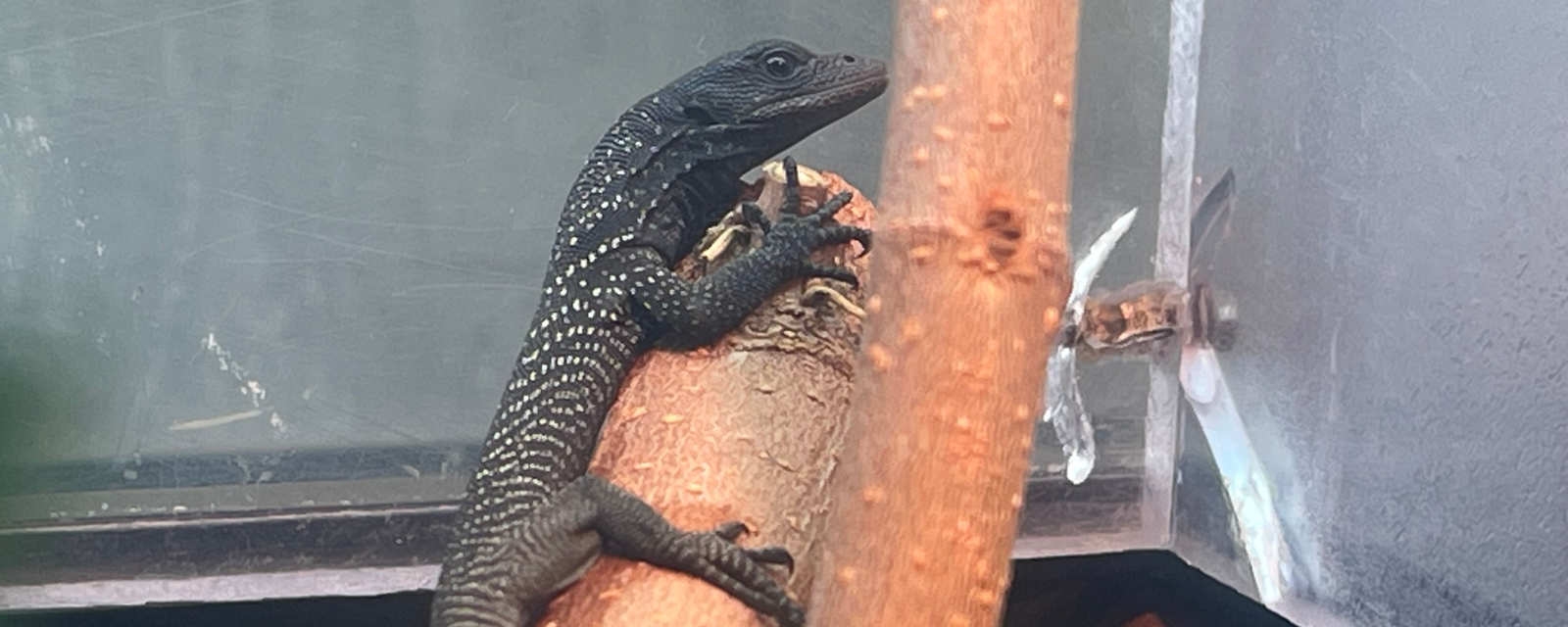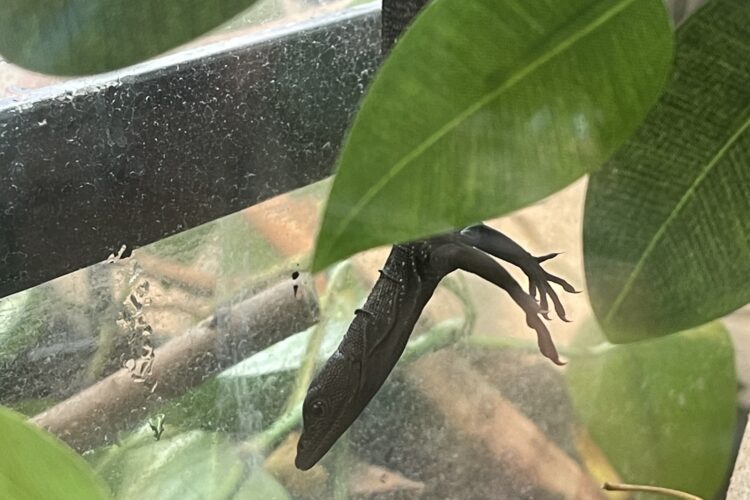Chicago (December 12, 2024) – There’s been a reptilian baby boom at Lincoln Park Zoo! Five black tree monitor lizards hatched between October 27 and November 2, making them the first offspring of a four-year-old female and her mate. The lizards are currently behind the scenes as they continue to grow and settle into their diets.
These hatchlings are part of the Black Tree Monitor Species Survival Plan (SSP), a collaborative population management effort among the Association of Zoos and Aquariums (AZA) institutions. With the addition of these five new lizards, there are now approximately 70 black tree monitors at 29 accredited institutions across the country. While their conservation status is currently unknown, researchers suspect that the populations of black tree monitors in the wild are decreasing due to harvesting for the pet trade.
Black tree monitor females typically bury their eggs in warm, elevated spaces where they continue to incubate for roughly 164 days. Once the eggs hatch, it takes roughly two years for the new monitors to reach sexual maturity. Hatchlings don’t feed at first, often going weeks without eating; the new monitors at Lincoln Park Zoo just started eating insects, waxworms, and mice, marking an important milestone in their early development.
“This is the first time in 20 years that we’ve had black tree monitor hatchlings at Lincoln Park Zoo, so their arrivals were quite exciting,” said Lincoln Park Zoo Curator Dan Boehm. “Black tree monitors are limited to a relatively small geographic range in the wild, so maintaining a healthy population across AZA institutions allows us to learn even more about this special species.”
Black tree monitors are only found on the Aru Islands, off the coast of New Guinea. They can be identified by their slender bodies and long tails that make up two-thirds of their total body length. The adults are solid black and measure between 3 and 4 feet long, while hatchlings like the ones at Lincoln Park Zoo are dark gray with rows of bright yellow-green dots. They tend to be solitary animals and live in forest environments, sticking primarily to the trees where their prehensile tails allow them to balance and grasp onto branches.
While the new hatchlings continue to grow behind the scenes, the parents can be viewed in their habitats in the front section of Regenstein Small Mammal-Reptile House.
Learn more about Lincoln Park Zoo and the world-class animal care it provides at lpzoo.org.






